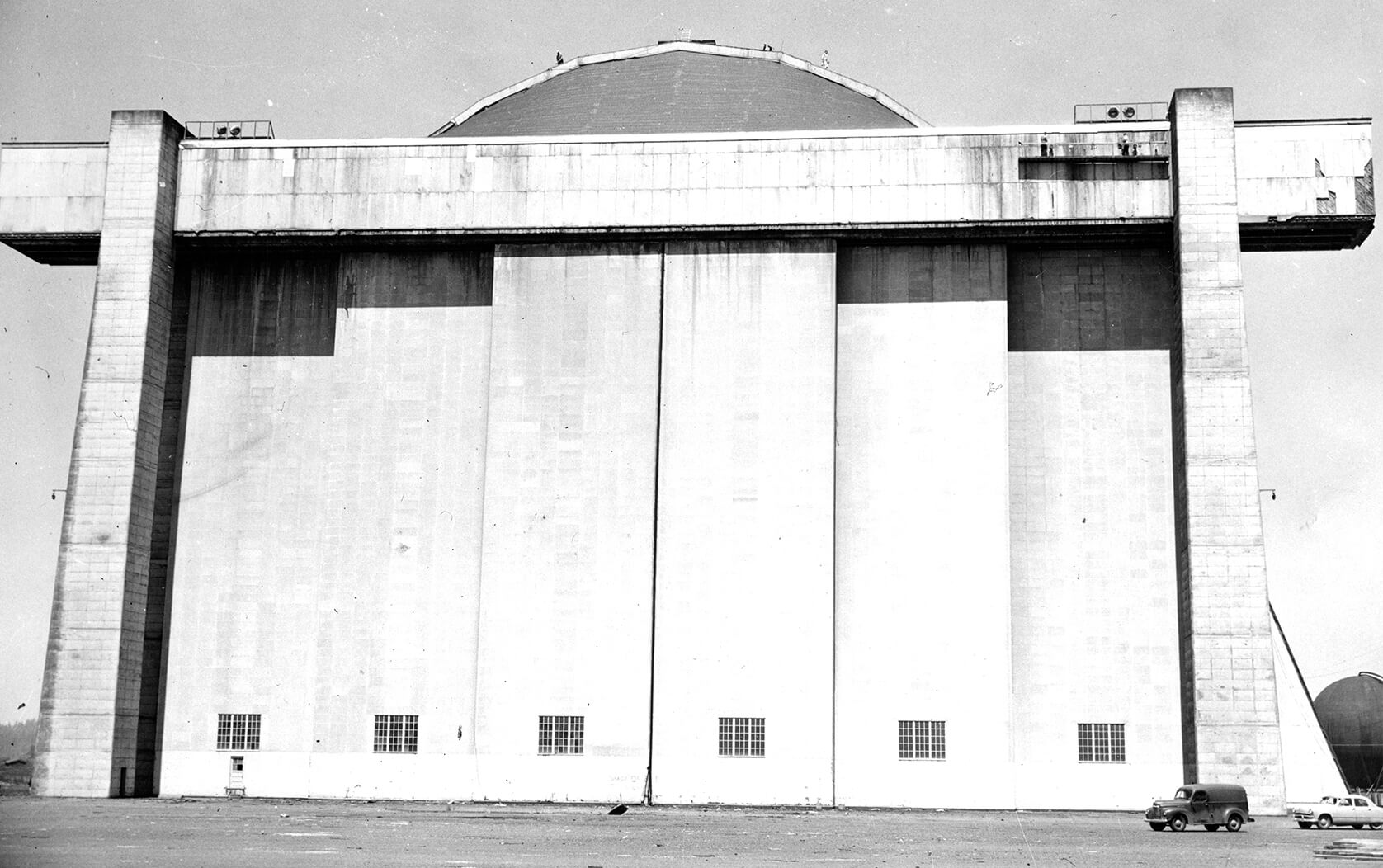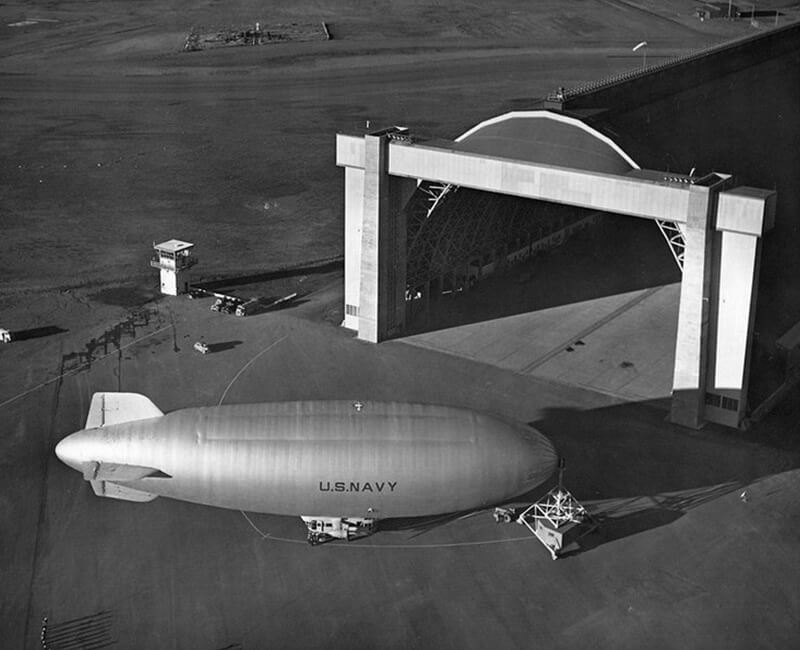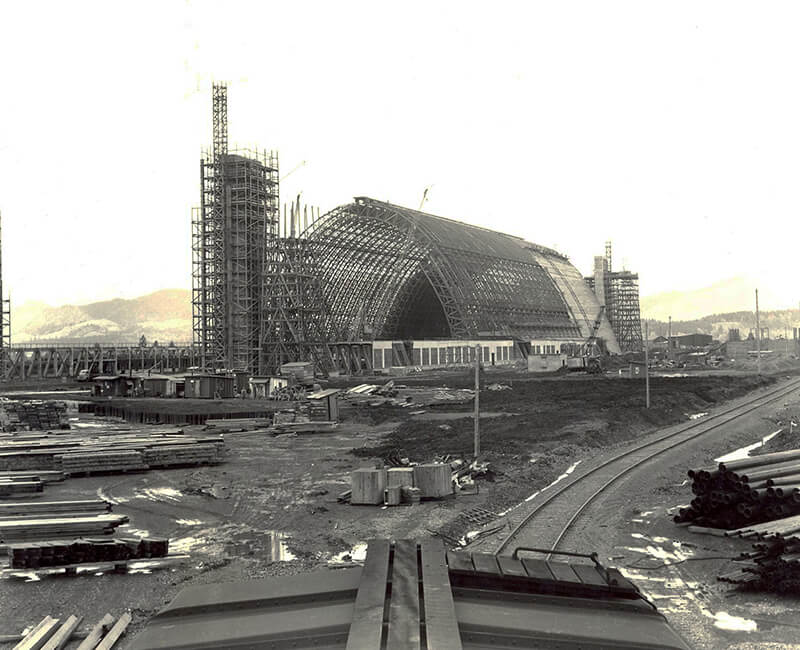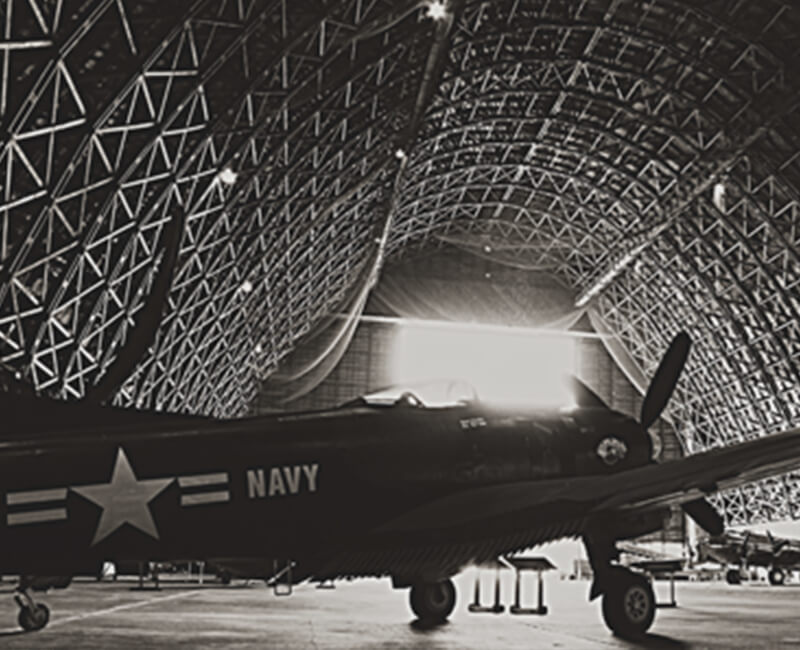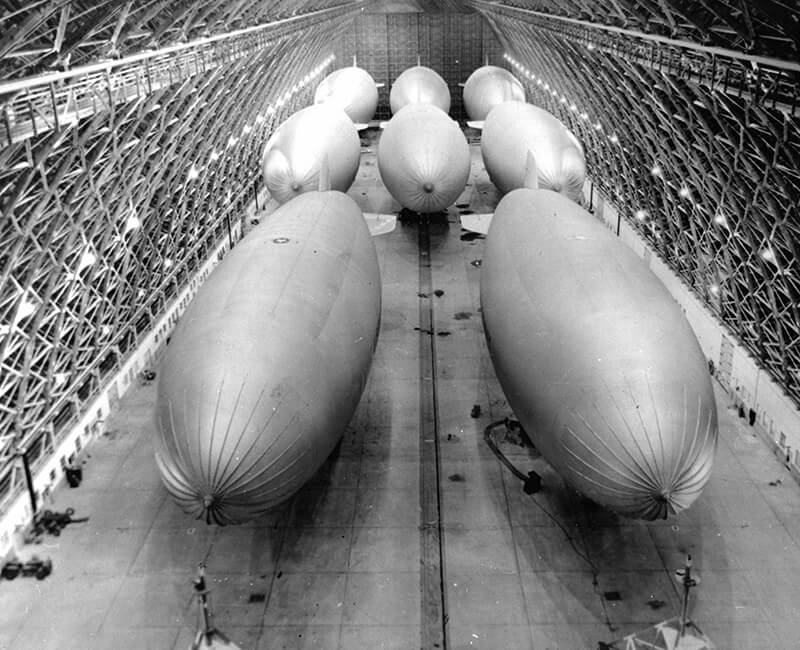About Hangar B
Hangar B History
Titan of Tillamook
With the attack of Pearl Harbor on December 7, 1941 fresh in the minds of Americans, plans to defend our coasts from enemy attack were put into place. Commissioned in December of 1942, Naval Air Station Tillamook was part of this ambitious plan. Here the Navy would build two massive, wooden, 1,000ft. long Hangars, each using approximately 3.3 million board feet of Oregon lumber (enough wood to build 279 three-bedroom homes). Designed to house blimps that would be used for escorting merchant ships in convoy and anti-submarine patrol for Japanese submarines, the first hangar, Hangar B, was begun in November of 1942. With 18 1/2” of rain falling in November, work on the hangar slowed considerably, but did not, and could not, stop. In December of 1942, work continued in earnest but the weather was just as treacherous as it had been in Nomvember, with Tillamook receiving over 19” of rain during the month. To make matters worse, between January and February of 1943, Tillamook received over 17” of snow, the first time the town had seen snowfall in 30 years and the worst fall/Winter in over two decades. At long last, nicer weather at Naval Air Station Tillamook prevailed and the two hangars, A & B were finally completed in August of 1943. Patrolling coastal areas from northern California all the way up to the Strait of Juan de Fuca bordering Canada, the blimps from Naval Air Station Tillamook proved vitally important to America during the Second World War.
With the end of the war, and the navy no longer needing its fleet of airships, Naval Air Station Tillamook’s hangars were emptied and replaced with over 400 surplus aircraft, flown in from all over the world for storage. In 1948, the Navy abandoned the hangars completely and decommissioned the base entirely.
In 1950, Hangar B received a new lease on life as Diamond Lumber set up shop inside the confines of the hangar. It was here in May of 1960 that President John F. Kennedy, (than Senator) came on one of his campaign stops to shake hands with mill workers inside Hangar B.
Beginning in the 1980’s, Hangar B became home to Aerolift Inc., a company working to develop a hybrid-type airship known as the Cyclocrane.. This experimental lighter-than-air craft was intended to be used for heavy lifting, particularly as a mechanism to aid loggers in the woods. In spite of the originality and use of such a craft, Aerolift abandoned the project and scrapped Cyclocrane.
In 1989, Hangar B was placed on the National Register of Historic Places, permanently cementing its role as a local AND national treasure.
In 1991, the great magician/illusionist David Copperfield, chose Hangar B for the site of one of his television specials, where he made a train from the Orient Express, disappear.
In 1994, Hangar B was chosen for the site of the new Tillamook Air Museum, a museum dedicated to, among other things, preserving the magnificent history of Hangar B.

Mission Statement
The Friends of Tillamook Air Museum is dedicated to the preservation and maintenance of Hangar B and Tillamook Air Museum for future generations.
